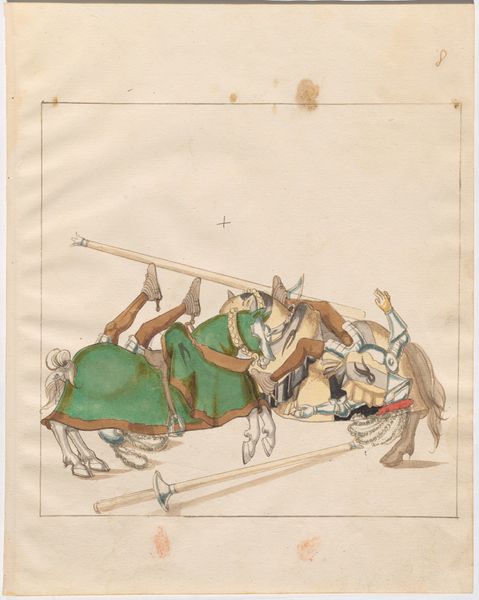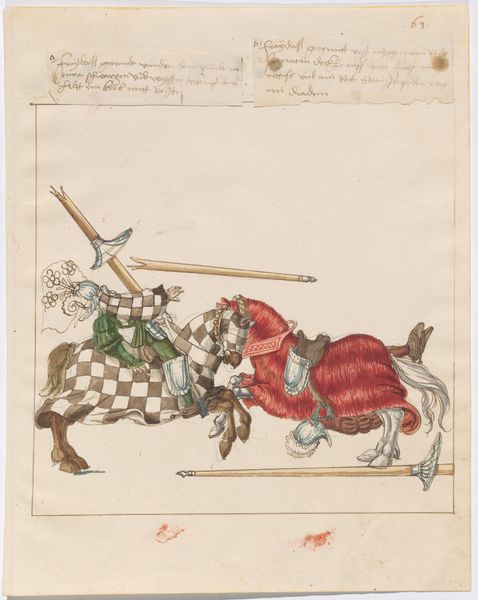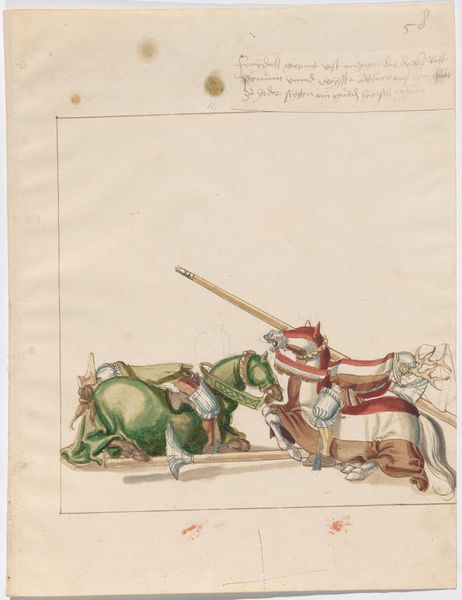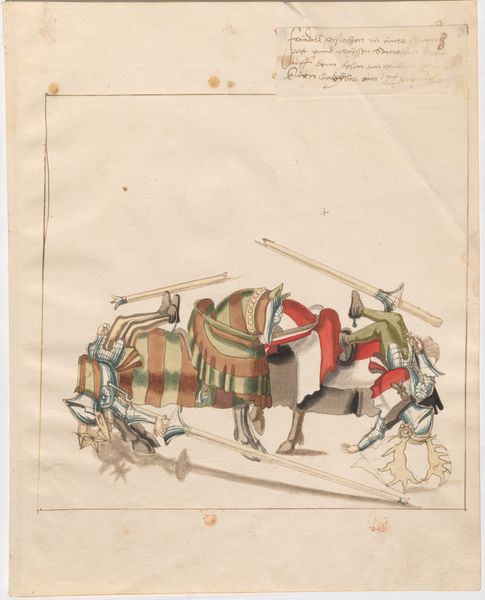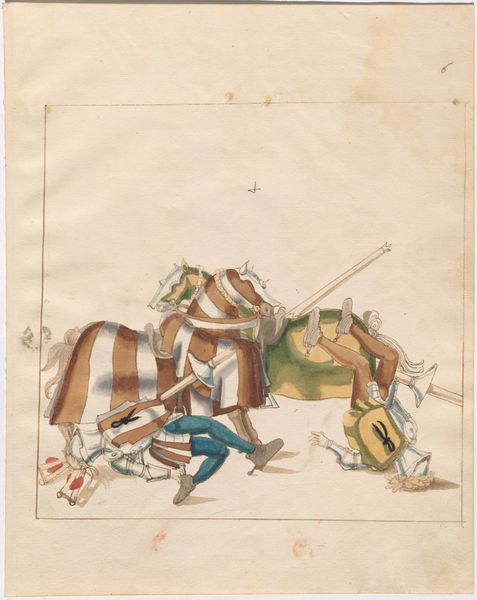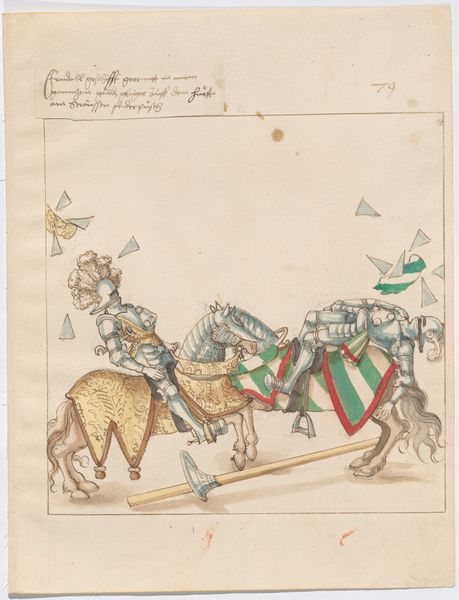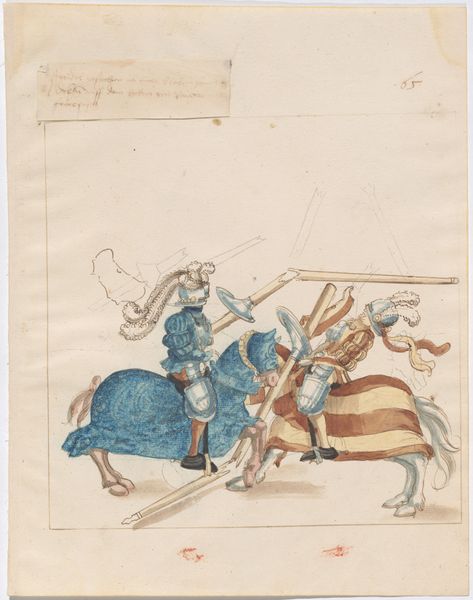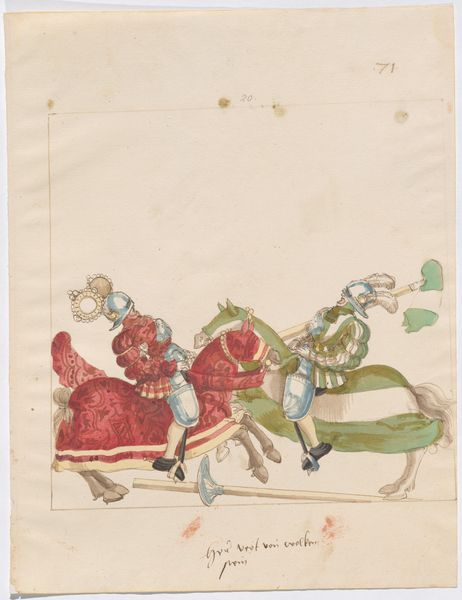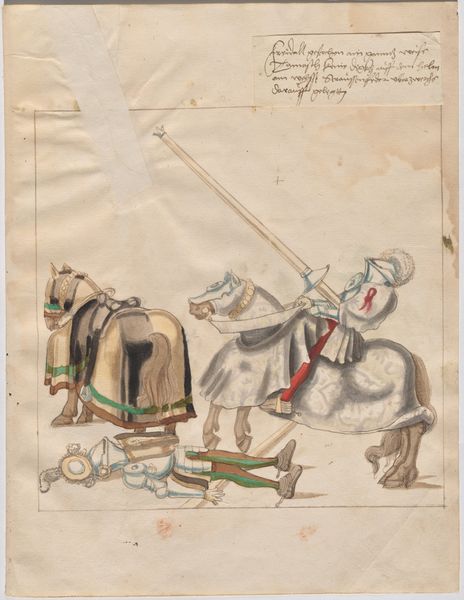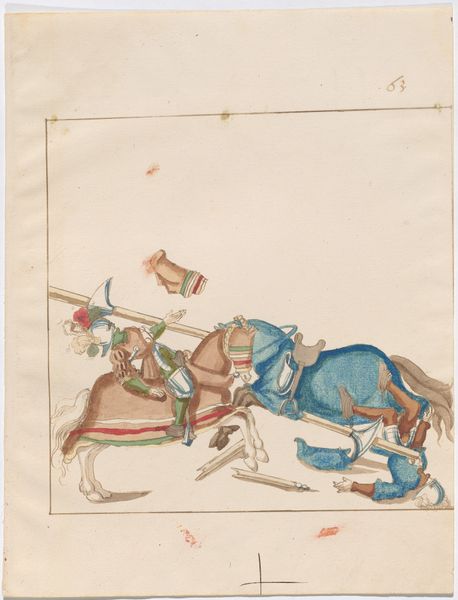
Mock Joust of War with Flying and Exploding Shields c. 1512 - 1515
0:00
0:00
drawing, tempera
#
drawing
#
medieval
#
narrative-art
#
tempera
#
figuration
#
history-painting
#
italian-renaissance
Dimensions: sheet: 33.7 × 26.3 cm (13 1/4 × 10 3/8 in.)
Copyright: National Gallery of Art: CC0 1.0
Editor: This intriguing drawing is called "Mock Joust of War with Flying and Exploding Shields," created around 1512-1515. It seems to be made with tempera on paper. The composition feels dynamic, with the knights falling off their horses. It's also kind of funny, the horses seem so unbothered! What strikes you about this work? Curator: It's interesting you pick up on the humor. These "mock jousts" were often veiled critiques of power. Think about the historical context: early 16th century, a time of immense social and political upheaval. The artist uses satire to question the very values of chivalry and warfare, presenting it as absurd and almost childish. Editor: So, the exploding shields and clumsy falls aren’t just funny; they’re symbolic? Curator: Precisely. Consider the elite status associated with jousting – only available to a select powerful few. What’s the drawing suggesting about them and their military habits through these exaggerated gestures? Think about class, privilege and access to the ‘tools of war’… Editor: That’s a powerful way to view it, connecting art directly to social commentary. Curator: It also brings into question the construction of masculinity and power at the time, as the elite sought to define themselves through public spectacles. Perhaps the artist’s ridicule offered a subtle critique, revealing insecurities underlying that performative display of strength? Editor: It reframes the entire piece for me. I was focused on the image, but you've opened my eyes to the message behind it. Curator: And the "message" as always, is firmly rooted in power dynamics of the time. What a deceptively brilliant drawing this is.
Comments
No comments
Be the first to comment and join the conversation on the ultimate creative platform.
